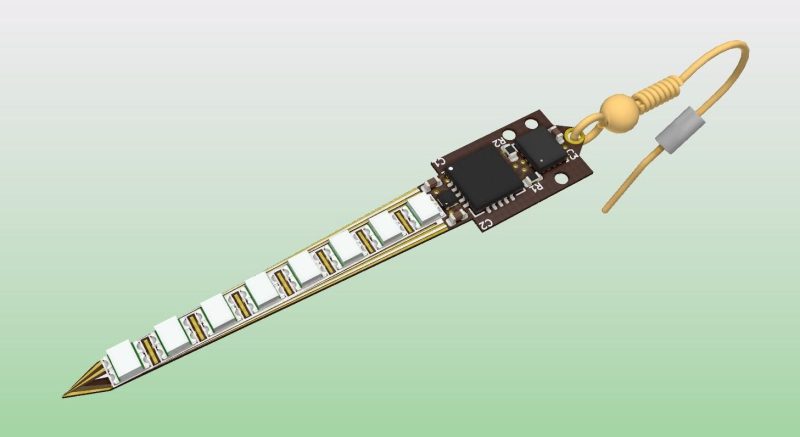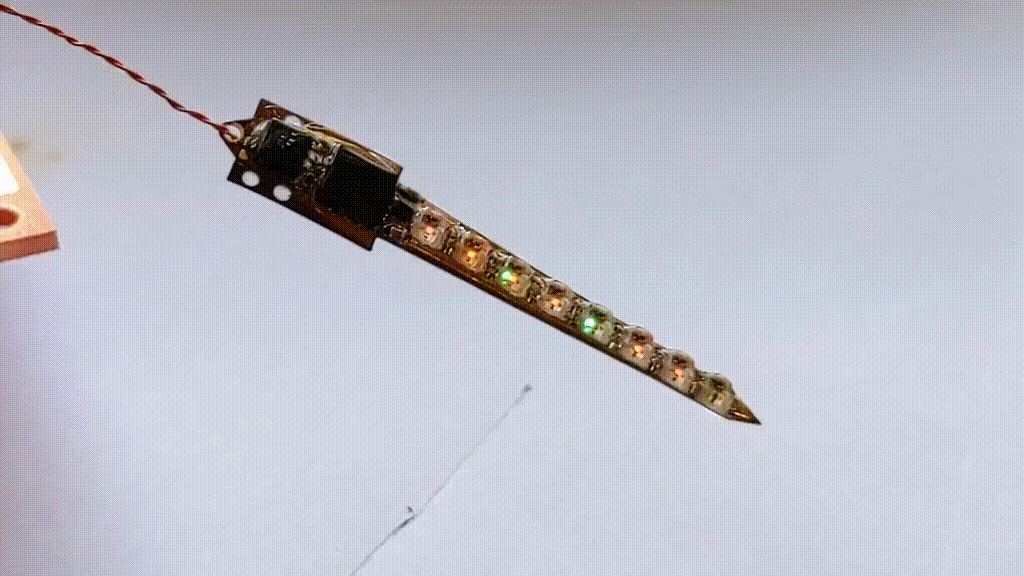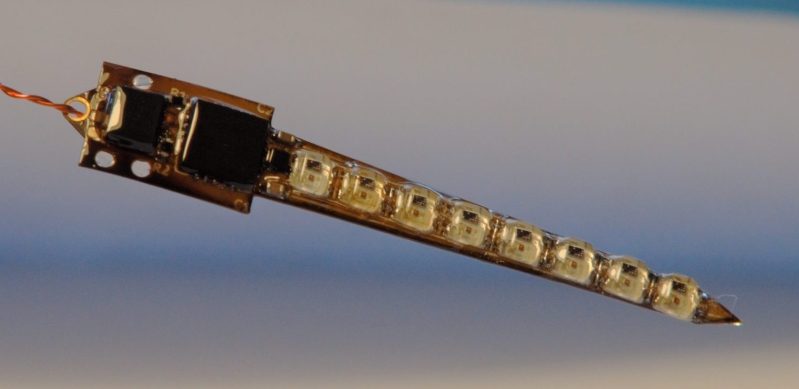Earrings have been a hackers’ target for electronic attachment for quite a while, but combining the needed components into a package small enough to wear in that finicky location is quite a challenge. If [Sawaiz Syed]’s Art Deco Earrings are anything to go by, ear computers have a bright future ahead of them!
This is a project unusually well described by its name. It is in fact an earring, with art deco styling. But that sells it way too short. This sliver of a flex circuit board is double sided to host an ATtiny, accelerometer, LDO, and eight 2020 formfactor controller-integrated LEDs. Of course it’s motion sensitive, reacting to the wearer’s movement via LED pattern. [Sawaiz] makes reference to wearing it while dancing, and we can’t help but imagine an entire ballroom all aglow with tiny points of LED light.

The Art Deco Earrings are also set apart by the thoroughness of their documentation (have we mentioned how much we love detailed documentation?). [Sawaiz] not only drops the source in your lap, but the README in the Github repo linked at the top walks the reader through each component of the design in detail. Plus the PCBA render is so complete it includes a model of the wire loop to fit through the wearer’s ear; how cool is that? The single piece that’s still in progress is the battery. The earring itself hosts an LDO, so all that is required is stashing a battery somewhere discrete, perhaps in the user’s hair? We’re looking forward to seeing what [Sawaiz] works out.
For the full effect, check out the gif of an assembled unit in action after the break.
















I wonder if these could be powered by a supercapacitor, like these earrings from Tindie: https://www.tindie.com/products/bobricius/usb-supercapacitor-led-earrings/
The battery is ALWAYS the problem…
Just run a long extension cord to power a surplus wall wart that could be worn as a necklace.
😂
If you intend to use it at public spaces I’d expect it would have the RF field used by those with hearing impairments.. Wonder if you could get enough energy out of that and so not need a battery at all.
IF not I’d think a Tira/crown/hat with the battery and magnetic power wires might be a good way to go – if the wire ever does snag it should release easily but reconnect effortlessly.
You could probably hang a CR2032 right behind the earlobe by means of a wire or string tied around the ear, which would make a pretty short distance from the power source to device. A few 312s in series could probably even fit on the earring itself but that adds weight so meh. Still neat to see a whole AT used on a piece of jewelry, not a lot of makers have been doing that